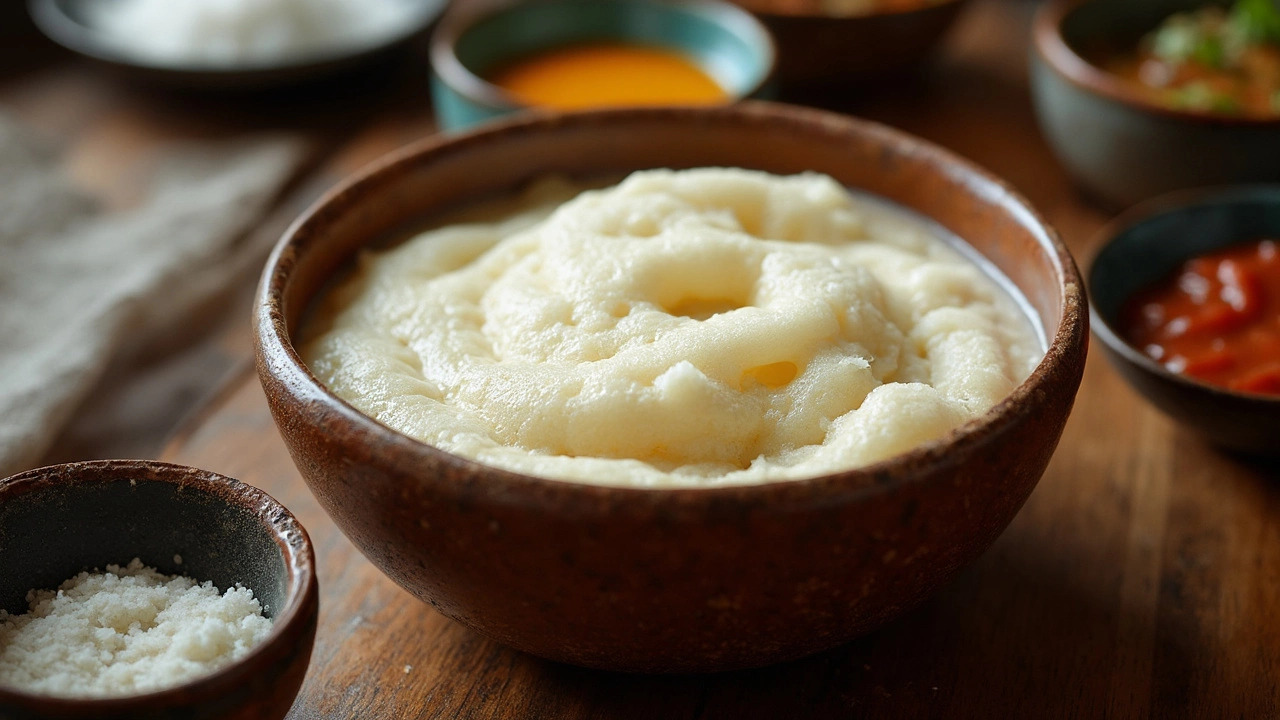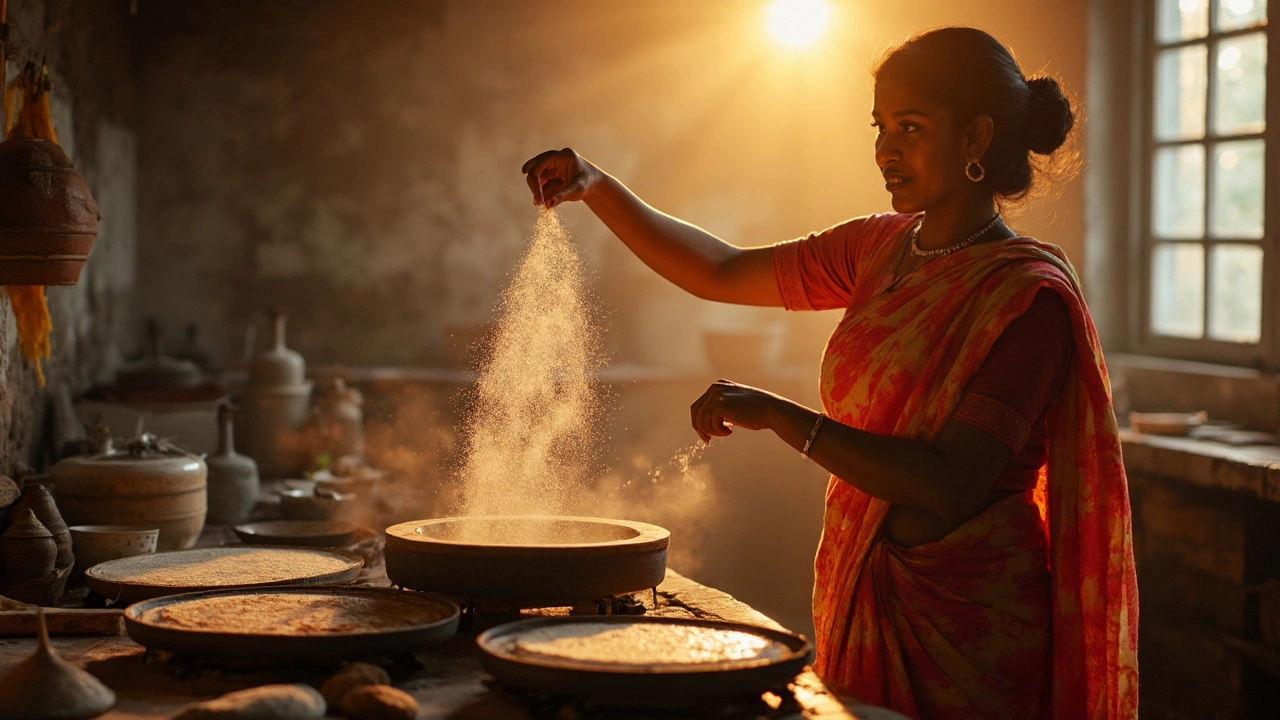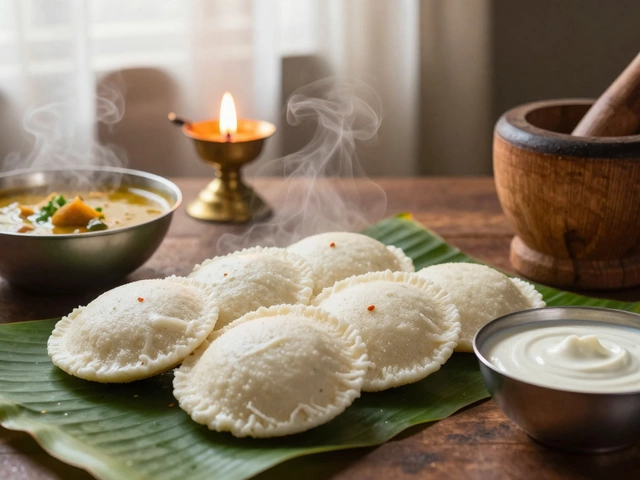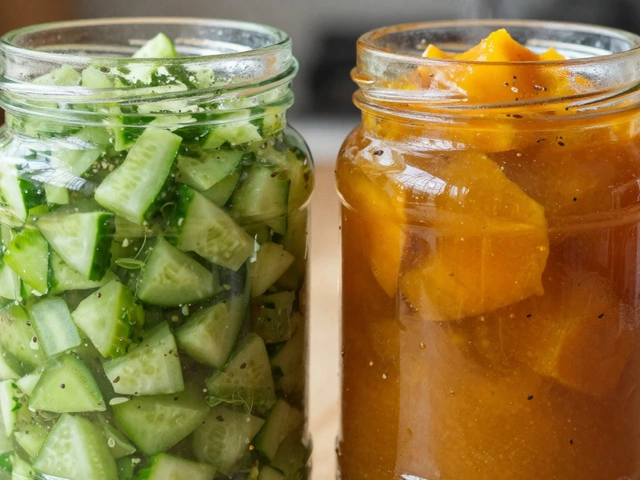If you've ever made dosa at home and ended up with something pancake-like rather than crisp and airy, you're not alone. The secret fix for that heavy batter? A pinch of baking soda. This small step has a huge effect—not only on your dosa's texture, but on your morning mood too.
Baking soda isn't about faking fermentation or skipping steps. What it really does is help your batter bubble up, letting more air sneak inside. This means lighter, fluffier dosas instead of chewy ones. It's handy, especially if your kitchen is cold or you had to cut the fermentation short. Even the pros do it when time is tight.
Lost track and let the batter ferment a little too long? Still getting sour flavors but no rise? That’s when a tiny sprinkle of baking soda swoops in to give your batter a gentle lift. It's a small hack, but wow, does it make a difference on a busy morning when everyone's hungry. Just remember, more isn't always better—a little goes a long way.
- What Does Baking Soda Actually Do?
- How Much Baking Soda Should You Add?
- Does Baking Soda Affect Taste or Health?
- Pro Tips for Perfect Dosa Every Time
What Does Baking Soda Actually Do?
Baking soda, or sodium bicarbonate, is the not-so-secret weapon that helps you get the perfect rise in dosa batter. When you add it to your fermented batter, it reacts with the acid naturally produced during fermentation (mostly lactic acid). This reaction creates loads of carbon dioxide bubbles. Those bubbles get trapped in the batter, making it puffier and giving your dosas that light, airy texture people crave.
Think of baking soda as the batter's backup, especially if your usual overnight fermentation didn't get bubbly enough. It kicks off a quick chemical reaction right as you add it, getting your batter ready for crispy edges and soft centers. This is perfect on cold days or in air-conditioned kitchens where good fermentation is tough.
Here’s how the science part plays out:
- Baking soda + acid in batter = carbon dioxide gas
- Gas forms bubbles trapped in the batter
- Batter gets lighter and spreads easier on the hot pan
- Dosas turn out spongy inside and crisp outside
If you're still on the fence, check out this simple breakdown of what happens when you use baking soda compared to regular batter:
| With Baking Soda | Without Baking Soda |
|---|---|
| Fluffy, lighter texture | Can be dense or chewy if under-fermented |
| Browns faster, looks tastier | Might look pale or odd if not fully fermented |
| Even kids usually love the softness | Sometimes gets rejected by picky eaters |
So, baking soda isn’t just a “shortcut”—it’s a smart tool for home cooks dealing with real-life kitchen surprises. If you ever had a batter that wouldn’t rise because you didn’t soak the rice long enough or your house was freezing, a pinch of baking soda can save the day. Just remember, use it wisely—too much makes the dosa taste bitter and odd.
How Much Baking Soda Should You Add?
No one wants to bite into a dosa that tastes like soap or feels dry and crumby. Getting the amount of baking soda right is the key.
For every 2 cups (roughly 400 grams) of dosa batter, you want to add just 1/8 to 1/4 teaspoon of baking soda. Seriously, that's all you need. Overdoing it won't make your dosa fluffier. Instead, it can bring a weird taste and change the color to yellowish. Keeping the amount modest does the trick—just enough to give the batter a gentle lift.
Here's a super simple guide:
- 2 cups batter: 1/8–1/4 teaspoon baking soda
- 4 cups batter: 1/4–1/2 teaspoon baking soda
Think of baking soda as a backup dancer, not the star—if your batter is already well-fermented and bubbly, you might not even need it. But if it looks flat after fermenting all night, that's when a pinch makes sense.
If you’re serving a crowd and making a big batch, stick to the same ratio. Mixing the baking soda right before you start making dosas is crucial. That makes sure the bubbles form at the right moment, so your dosa lands on the griddle in its fluffiest form.
Quick look at what happens if you change the quantity:
| Baking Soda (per 2 cups batter) | Result |
|---|---|
| None | Traditional, thin, and maybe less fluffy |
| 1/8 tsp | Slight lift, crisper edges |
| 1/4 tsp | Soft and fluffy, classic restaurant style |
| 1/2 tsp or more | Odd flavor, yellowish color, bitter aftertaste |
My kitchen rule: always go less at first. If the first dosa isn’t airy enough, you can always add a pinch more. But once you’ve dumped in too much, there’s no going back. Taste while you cook and adjust on the fly—your family (and your taste buds) will thank you.

Does Baking Soda Affect Taste or Health?
The big question: does tossing baking soda in dosa batter mess up the flavor, or worse, is it bad for you? Here’s what actually happens. When you use just a pinch, baking soda mostly changes the texture, not the flavor. The batter gets a mild lift, and the sour notes from fermentation get a bit milder. If you go overboard, though, you’ll end up with dosas that taste slightly soapy or bitter. Nobody likes that!
On the health front, a little baking soda won’t hurt—scientists say the average half-teaspoon per cup of batter is safe for most people. Your body actually needs some sodium to function, but if you’re watching your salt or have kidney issues, don’t go wild with the baking soda. Here’s a breakdown of what a typical serving actually adds to your daily intake:
| Amount Added | Sodium per Dosa | Daily Sodium % |
|---|---|---|
| 1/4 tsp to 2 cups batter | ~80 mg | 3% |
| 1/2 tsp to 2 cups batter | ~160 mg | 7% |
One helpful tip: always mix baking soda into the batter right before you’re ready to cook. If you add it too early, it loses its fizz and you won’t get that light, bubbly feel in your dosas. And about color—sometimes dosas with a bit too much baking soda turn out oddly brown, which can throw people off. Stick to the classic quarter-teaspoon trick, and you’ll rarely have problems.
If you or your family are super sensitive to sodium, feel free to skip the baking soda or find alternatives like Eno or baking powder (which already has a little acid mixed in). But honestly, for most folks, a tiny bit of soda now and then is no big deal.
Pro Tips for Perfect Dosa Every Time
Getting dosas just right is mostly about the little details. Here’s what I always do at home to make breakfast go smoother and taste better.
- Dosa batter needs proper fermentation for best results. Keep the batter in a warm spot—around 30°C is perfect. When it doubles in size and smells slightly sour, it’s ready.
- Add baking soda just before you cook the dosas, not while fermenting. This keeps the bubbles fresh and gives your dosas that light, crisp edge everyone loves.
- Start with just 1/8 tsp baking soda per 2 cups of batter. Too much can leave a soapy taste and weird texture. If the weather is cold or you’re short on time, a bit of baking soda really helps bring out the fluffiness.
- Mix the batter gently after adding baking soda. Don’t overstir, or you’ll knock out the air bubbles you need for lift.
- Cook immediately after adding baking soda. Don’t let the batter sit around, or the bubbles will disappear.
- Use a well-heated, nonstick pan or flat cast iron skillet. Grease it lightly each time. This stops the dosa from sticking and helps get that perfect golden-brown layer.
If you’re curious about how temperature affects fermentation, take a look at this table. Colder kitchens slow things down; warmer spots help speed them up. Knowing this can save you from checking the batter every hour.
| Room Temperature (°C) | Fermentation Time (Hours) |
|---|---|
| < 20 | 18–24 |
| 20–25 | 12–16 |
| 25–30 | 8–10 |
| > 30 | 6–8 |
If your batter didn’t rise much, even after the recommended time, check if you used old rice, not enough urad dal, or water that’s too cold. A quick fix with baking soda can save the day, but for next time, consider using a bit more dal or pre-soaking in slightly warm water.
Everyone’s pan, stove, and even water is a little different—don’t stress if your dosas aren’t perfect the first few times. You’ll get to know the right heat, thickness, and timing with a bit of practice. Trust me, nothing impresses the family more than a stack of crispy, golden dosas on the table!


